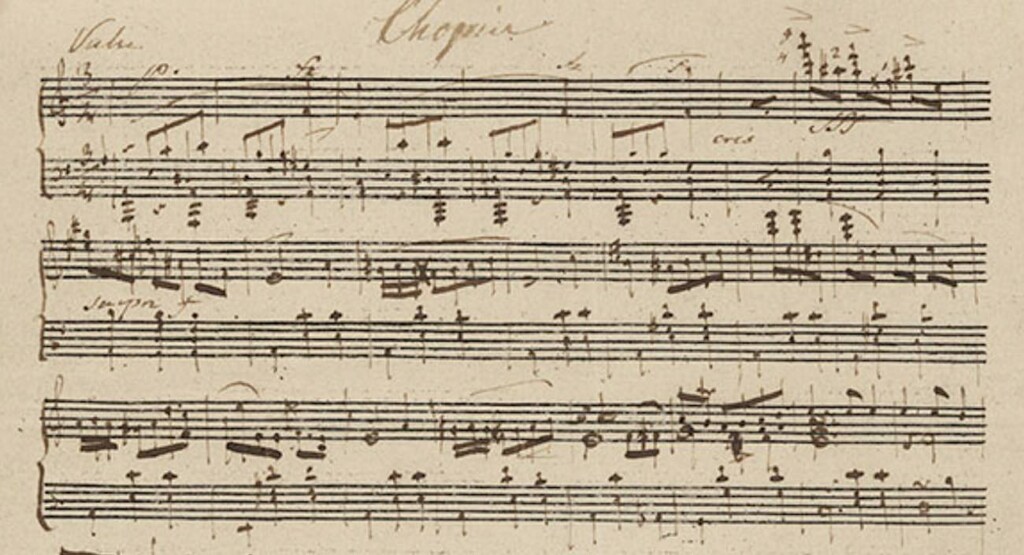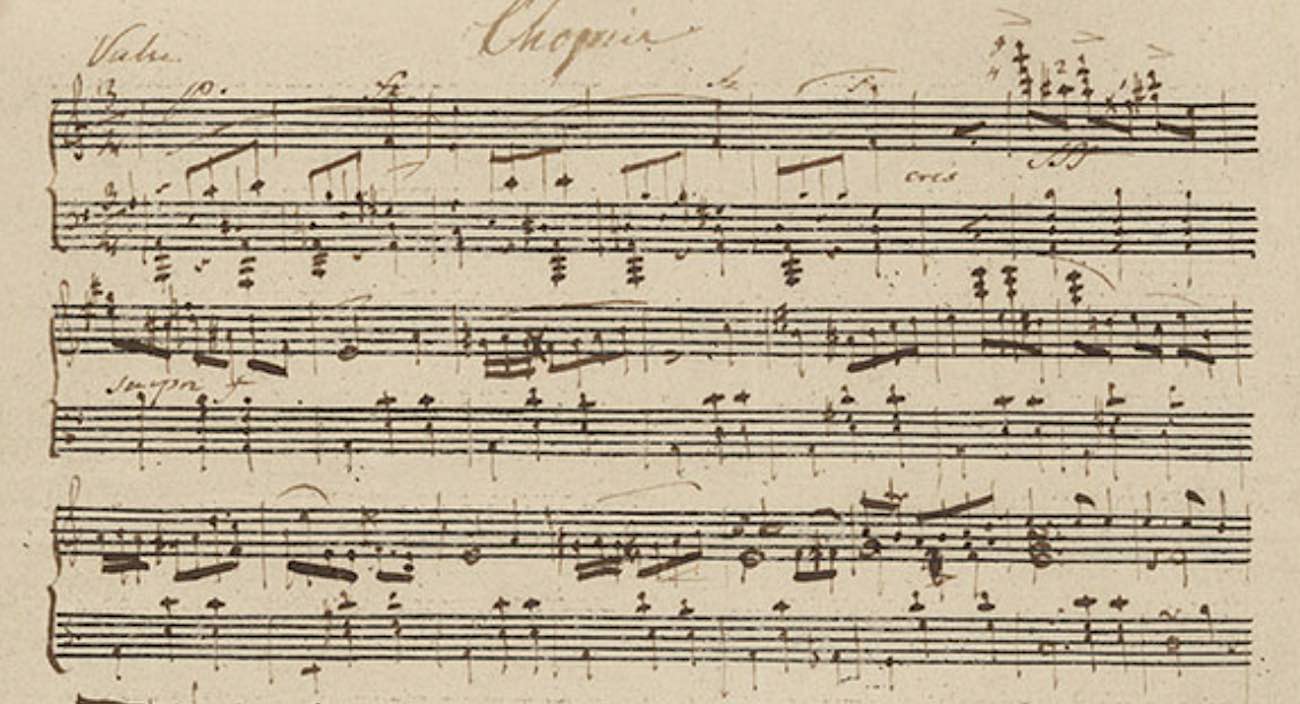
A museum curator uncovered a previously unknown waltz written in the hand of composer Frédéric Chopin, something which hasn’t happened since the late 1930s.
Found in the Morgan Library & Museum’s Satz Collection, the manuscript music sheet consists of twenty-four notated measures that the composer asks the pianist to repeat once in their entirety.
Chopin famously wrote in “small forms,” but this work, lasting about one minute, is shorter than any other waltz by him. It is nevertheless a complete piece, “showing the kind of ‘tightness’ that we expect from a finished work by the composer,” the Morgan Library & Museum said in a statement released on the discovery.
“The beginning of the piece is most remarkable: several moody, dissonant measures culminate in a loud outburst before a melancholy melody begins. None of his known waltzes start this way, making this one even more intriguing,” the statement explains.
The manuscript is only slightly larger than an index card (about 4 x 5 inches); based on other similarly-sized manuscripts by Chopin, it is assumed that it was meant as a gift. Chopin usually signed manuscripts that were gifts, but this one is unsigned, suggesting that he changed his mind and withheld it.
The Morgan Library’s Associate Curator of Music Manuscripts and Printed Music, Robinson McClellan, first came across the manuscript when he began cataloging a collection that came to the library in 2019.
MORE STORIES LIKE THIS: Previously Unknown Mozart Song Discovered in German Library After 200 Years
Although the piece was identified as “Chopin” in the collection, he found it peculiar that he could not think of any waltzes by Chopin that matched the measures on the page. McClellan called upon leading Chopin expert Professor Jeffrey Kallberg of the University of Pennsylvania to work with him to verify the manuscript’s authenticity and to understand the role of the work in Chopin’s musical life.
Extensive research points to the strong likelihood that the piece is by Chopin, and a spokesperson for the library told CNN that much of the handwritten notations seem to point to Chopin’s interest in hearing it performed.
“The penmanship matches other examples of Chopin’s handwriting,” said the spokeswoman. “The score contains fingerings and dynamic markings, suggesting that Chopin thought the piece might be performed someday.”
MORE LOST MASTERPIECES: Renaissance Masterpiece Found Hanging in 90-Year-Old Woman’s Bedroom
“This newly discovered waltz expands our understanding of Chopin as a composer and opens new questions for scholars to consider regarding when he wrote it and for whom it was intended,” said Robinson McClellan. “To hear this work for the first time will be an exciting moment for everyone in the world of classical piano.”
The discovery comes—bizarrely—about one month since the debut in Leipzig of the first newly discovered Mozart work in 200 years, and shows that these classical geniuses can still top the charts—centuries after their deaths.
SHARE This Incredible Discovery With Your Friends Who Love Classical…




















